This is the 5G networking option we are all familiar with…
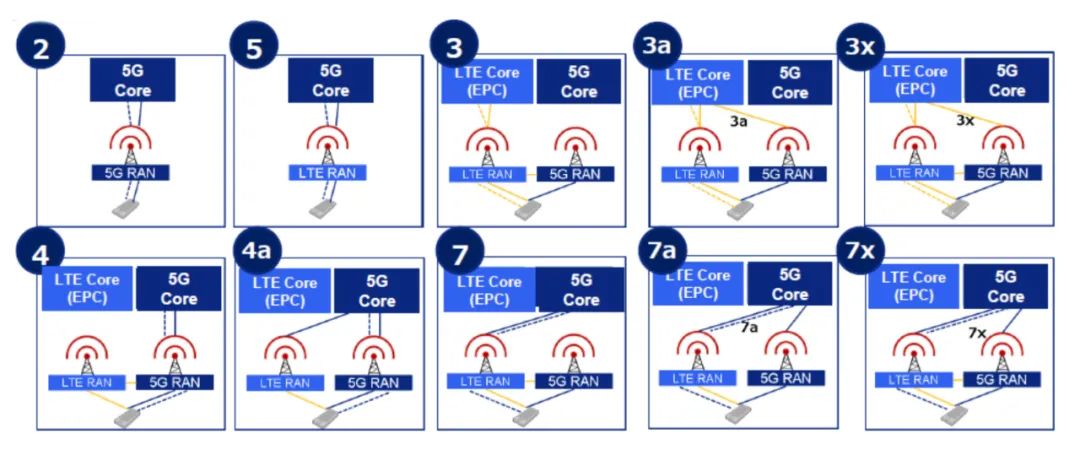
There are options 2, 3, 4, 5, and 7, but there is no option 6.
So what does option 6 look like?
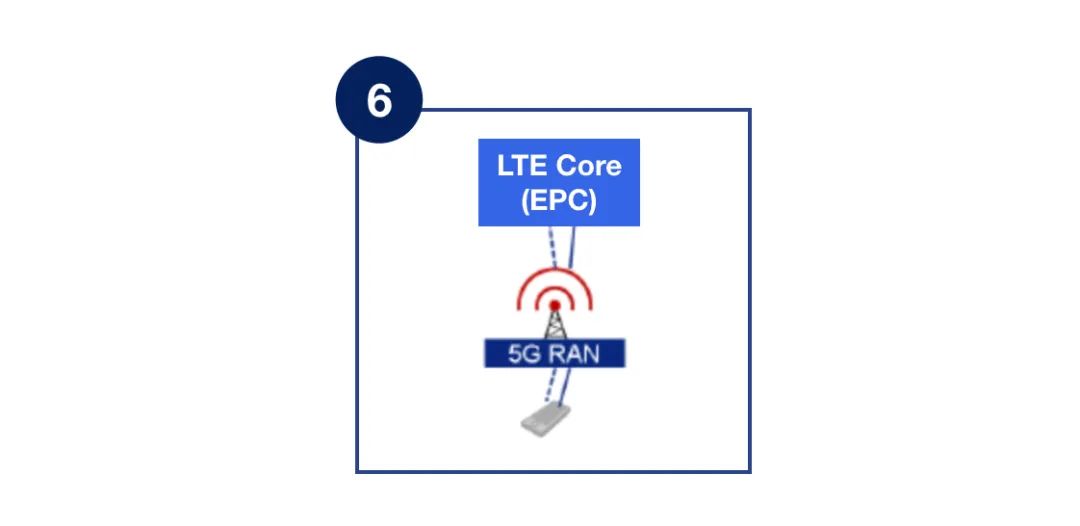
It connects the 4G core network to 5G base stations, and only connects to 5G base stations.
This option was proposed around 2017 during a 3GPP network seminar, but it was reportedly later “abandoned” by 3GPP.
No operators globally have adopted this 5G networking option.
However, recently, according to Indian media outlet livemint, Indian operator Reliance Jio is lobbying to promote the adoption of option 6 standard for 5G deployment strategies.
This is simply a “quirky” move!
What is the reason?
Because Jio “is a special case”; neither option 3 nor option 2 is very suitable for it.
First, option 3 is not suitable for Jio.
Indian media reported that Satish Jamadagni, Vice President of Network Planning Engineering at Reliance Jio and Vice Chairman of the Telecom Standards Development Society of India (TSDSI), made a statement indicating that the non-independent networking model is not suitable for Jio because its 4G users are growing exponentially, and the network is nearly at full capacity.
He pointed out that the average utilization rate of Jio’s 4G network is as high as 90% to 98%, while the average utilization rate of 4G networks of operators in other countries is only 5% to 40%.
The implication is that the 4G base stations are already very congested, and the number of 4G mobile users is still increasing rapidly. If option 3’s non-independent deployment method is adopted, anchoring 5G base stations to 4G base stations is not feasible.
Therefore, he believes that Jio has to adopt an independent deployment method.
What about option 2? Directly independently deploy 5G base stations and a 5G core network.
But option 2 is also not feasible.
Because the 5G core network is too expensive.
He continued to state that deploying the entire 5G core network would cost between $1 billion to $1.5 billion, which is not worthwhile.
The 5G core network can provide private networks for thousands of industries through network slicing technology, enabling operators to expand their business from B2C to B2B, while the UPF of the 5G core network can flexibly sink to the edge, enabling low-latency, high-reliability innovative 5G applications.
How can one say that spending money to deploy a 5G core network is not worthwhile?
In response, some industry insiders in India also expressed concerns, pointing out that although option 6 can provide enhanced mobile broadband service (eMBB), it cannot provide end-to-end SLA guarantees based on network slicing, and cannot enable low-latency, high-reliability use cases like industrial control and remote healthcare.
Perhaps in Jamadagni’s view, the mobile broadband business (MBB) in the Indian market has a lot of untapped potential, and there is still significant market space for providing eMBB services based on option 6, so there is no rush to deploy the 5G core network.
Jamadagni also stated in his email response to the media that his remarks do not represent Jio’s opinion but are made in his capacity as Vice Chairman of the industry standards organization TSDSI.
Considering that Jio recently announced its so-called “self-developed” 5G at the shareholders’ meeting, the industry speculates that it may deploy Open RAN base stations. Perhaps this operator will adopt option 6 and deploy Open RAN 5G base stations under a virtualized 4G core network?
Let’s not focus on this “quirky” idea for now. To further understand 5G networking, let’s review the major networking options for 5G.
In simple terms
In simple terms, 5G networking includes the following options:
• Option 1, Standalone Networking (SA), where LTE base stations connect to the 4G core network, which is the current networking architecture for 4G networks.
• Option 2, Standalone Networking (SA), where 5G NR base stations connect to the 5G core network.
• Option 3, Non-Standalone Networking (NSA), where LTE and 5G NR base stations connect to the 4G core network.
• Option 4, Non-Standalone Networking (NSA), where 5G NR and LTE base stations connect to the 5G core network.
• Option 5, Standalone Networking (SA), where LTE base stations connect to the 5G core network.
• Option 7, Non-Standalone Networking (NSA), where LTE and 5G NR base stations connect to the 5G core network.
It reads a bit like a tongue twister, so let’s illustrate it with a diagram.
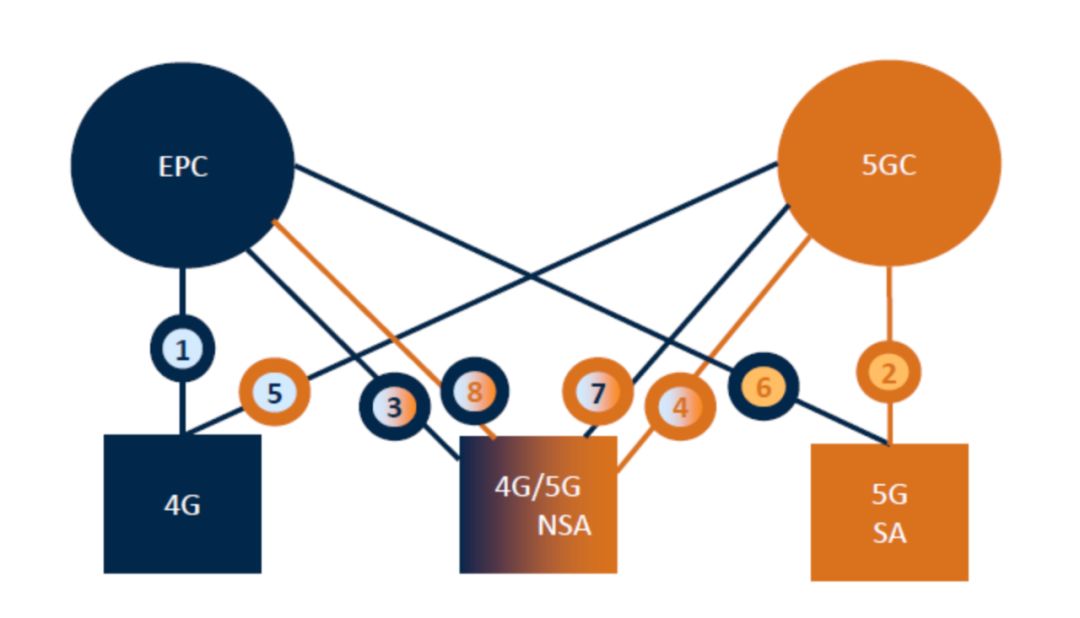
We also need to mention dual connectivity (DC).
The dual connectivity technology was first proposed in the 3GPP R12 version during the 4G era. Its basic principle is to allow a mobile phone to connect to two (or more) nodes (base stations) in the wireless access network, one of which is the primary node responsible for the control plane of wireless access, handling signaling or control messages; while the other (or others) are auxiliary nodes, responsible only for the user plane, which carries data traffic.
Why did R12 introduce dual connectivity? Mainly to improve network speed, balance network load, and avoid switching interruptions, ensuring robust mobility.
Entering the 5G era, the principle of LTE/NR dual connectivity is basically the same as that of R12’s LTE/LTE dual connectivity, where either the LTE base station (eNB) serves as the primary node and the 5G base station (gNB) as the auxiliary node; or the 5G base station (gNB) serves as the primary node and the LTE base station (eNB) serves as the auxiliary node.
Having briefly introduced this, let’s now specifically discuss each networking option.
Option 3 Series
The 3GPP Release 15 NSA NR standard completed in December 2017 is based on the option 3 series.
In the option 3 series, terminals connect simultaneously to 5G NR and 4G LTE, with the control plane anchored on 4G, continuing to use the 4G core network.
In terms of the control plane, the option 3 series completely relies on the existing 4G system. However, there are differences in the anchoring points for the user plane, which is why the option 3 series has three sub-options: 3, 3a, and 3x.
What are the differences between options 3, 3a, and 3x?
Option 3

The characteristics of option 3 are as follows:
• The control and user planes of the 5G base station are both anchored to the 4G base station.
• The 5G base station does not communicate directly with the 4G core network; it connects to the 4G core network through the 4G base station.
• 4G and 5G data traffic is split at the 4G base station before being sent to mobile terminals.
• The Xx interface between the 4G and 5G base stations must support both the control plane and 5G data traffic, as well as traffic control, and must meet latency requirements.
Clearly, the biggest problem with the option 3 architecture is —- the 4G base station is under immense pressure.
Since 4G and 5G data traffic is split (or aggregated) at the 4G base station, this means the 4G base station has to handle both 4G and 5G traffic simultaneously, with the peak rate of 5G being dozens of times that of 4G, and the original 4G base station was not designed for 5G high speeds, hence the 4G base station will inevitably encounter processing capacity bottlenecks.
The solution is to upgrade the hardware of the 4G base station.
However, upgrading the 4G base station costs money, and some operators may be unwilling to do so, leading 3GPP to propose two additional options — options 3a and 3x.
Option 3a
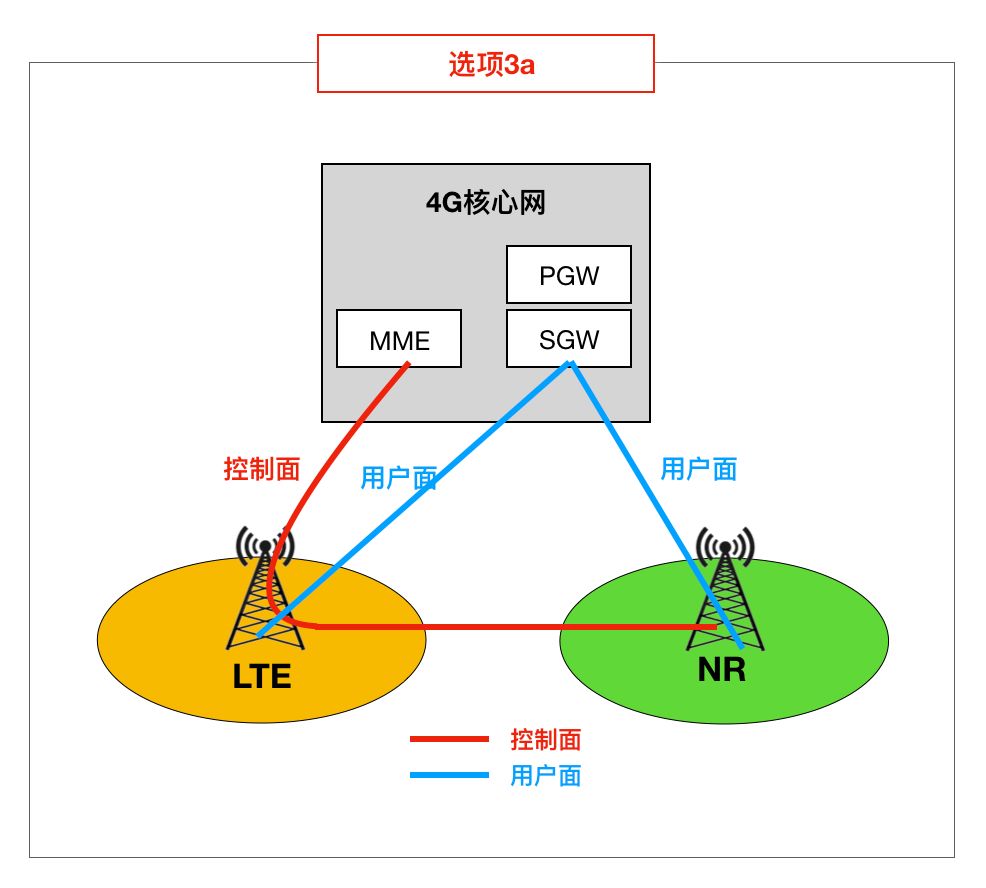
The difference between option 3a and option 3 is that it no longer burdens the 4G base station; the 4G and 5G data traffic no longer pass through the 4G base station for splitting and aggregation, but instead connect directly to the 4G core network, with only the control plane anchored on the 4G base station.
Option 3a, while relieving the burden on the 4G base station and not requiring significant investment in hardware upgrades, has new drawbacks.
First, on the user plane, both the 4G and 5G base stations connect directly to the 4G core network, and there is no X2 interface interconnection between them, which means they operate independently, carrying 4G and 5G traffic separately, without load sharing. For instance, the 4G base station might only carry VoLTE voice traffic, while the 5G base station only carries internet traffic.
At the same time, when a mobile phone “switches” from a 5G base station to a 4G base station, the core network needs to perform an S1 (the interface between the base station and the core network) Path Switch, which incurs a bit of “switching” latency.
Option 3x
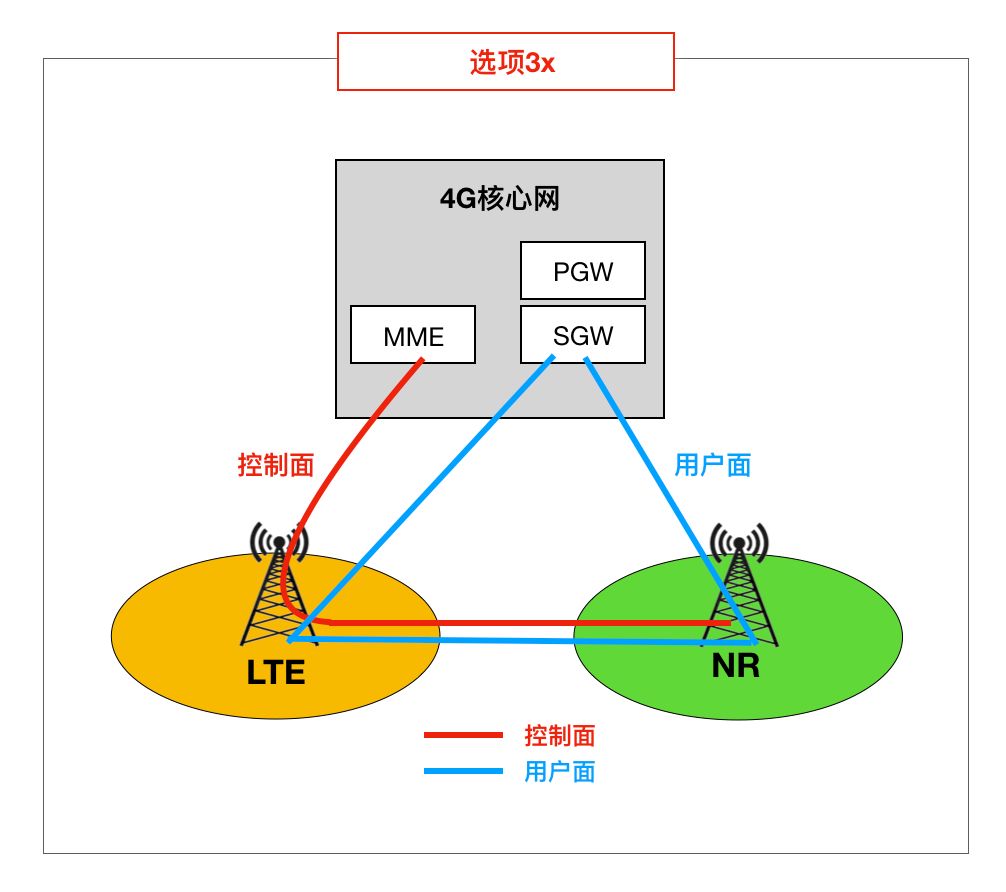
Option 3x can be seen as a combination of options 3 and 3a.
Under option 3x, the control plane is still anchored on 4G, but in the user plane, the 5G base station connects to the 4G core network, and the user data traffic is split and aggregated at the 5G base station, either sent directly to the terminal or forwarded to the 4G base station via the X2 interface before being sent to the terminal.
Option 3x architecture is future-oriented; it resolves the performance bottleneck issue of 4G base stations under the option 3 architecture without requiring hardware upgrades to the existing 4G base stations, and it also addresses the issue of independent operation of the 4G and 5G base stations under the option 3a architecture.
For some low-speed data streams, such as VoLTE, they can be directly sent from the 4G core network to the 4G base station.
So far, most operators have chosen option 3x.
Option 2
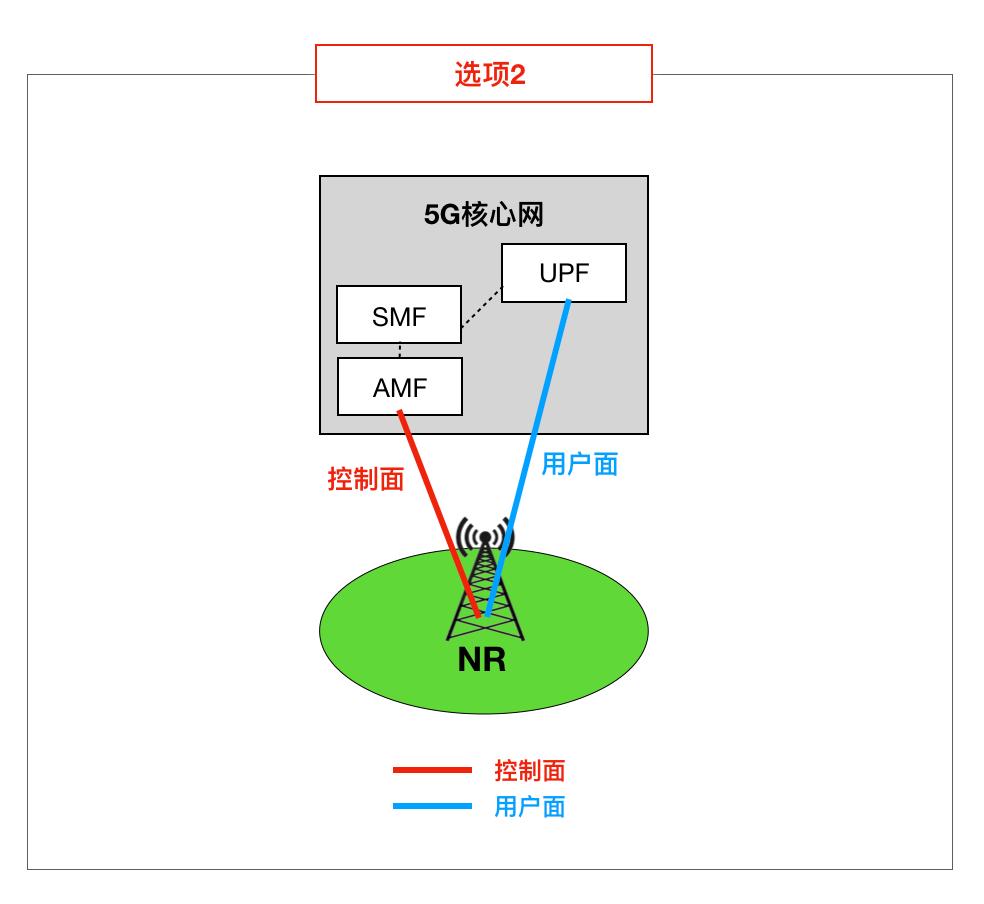
Option 2 is where 5G base stations are independently connected to the 5G core network, taking a significant step into the 5G era by integrating the 5G core network and access network.
In non-independent networking, the interconnection between 5G and 4G at the access network level is more complex. However, under option 2’s independent networking, the 5G network operates independently of the 4G network, with interconnection between 5G and 4G only at the core network level, making interconnection simpler.
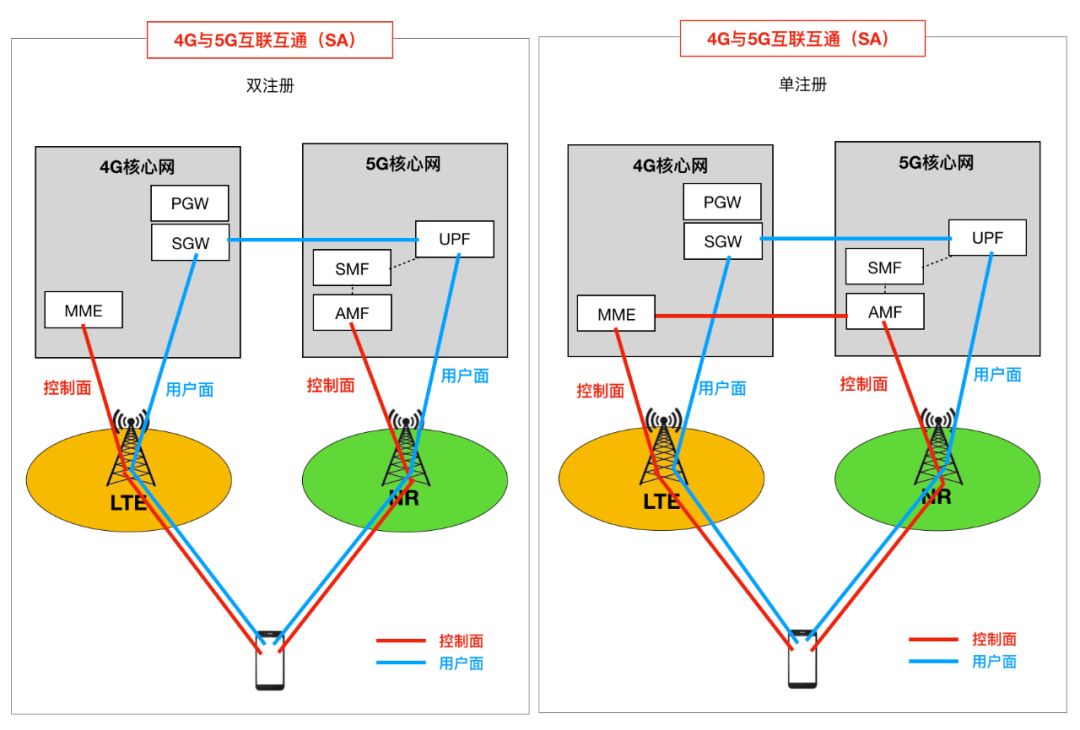
▲Under option 2 architecture, the 4G network and 5G network interconnect at the core network level
However, the problem is that unlike the option 3 series which relies on the mature network and ecological scale advantages of 4G, once operators choose to start building networks from option 2, it means they need to invest heavily in constructing an independent 5G network, which requires them to balance the protection of 4G assets and investment in 5G construction in the current situation where new use cases for 5G have yet to explode.
Option 7 Series
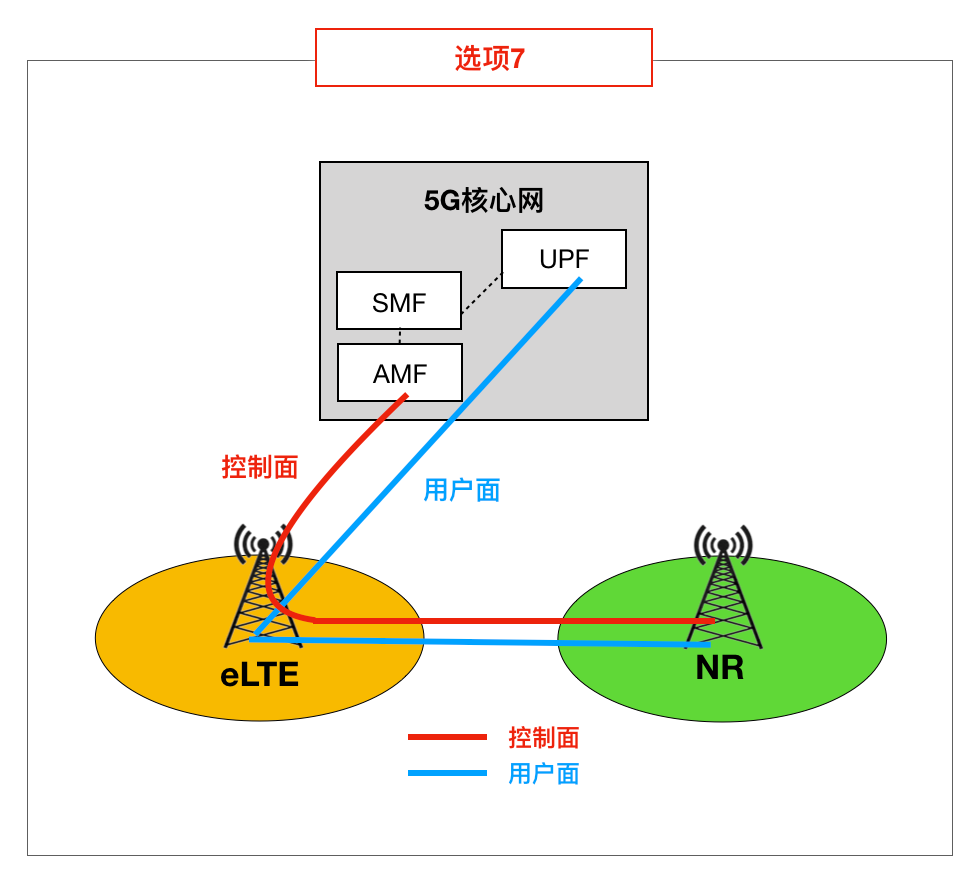

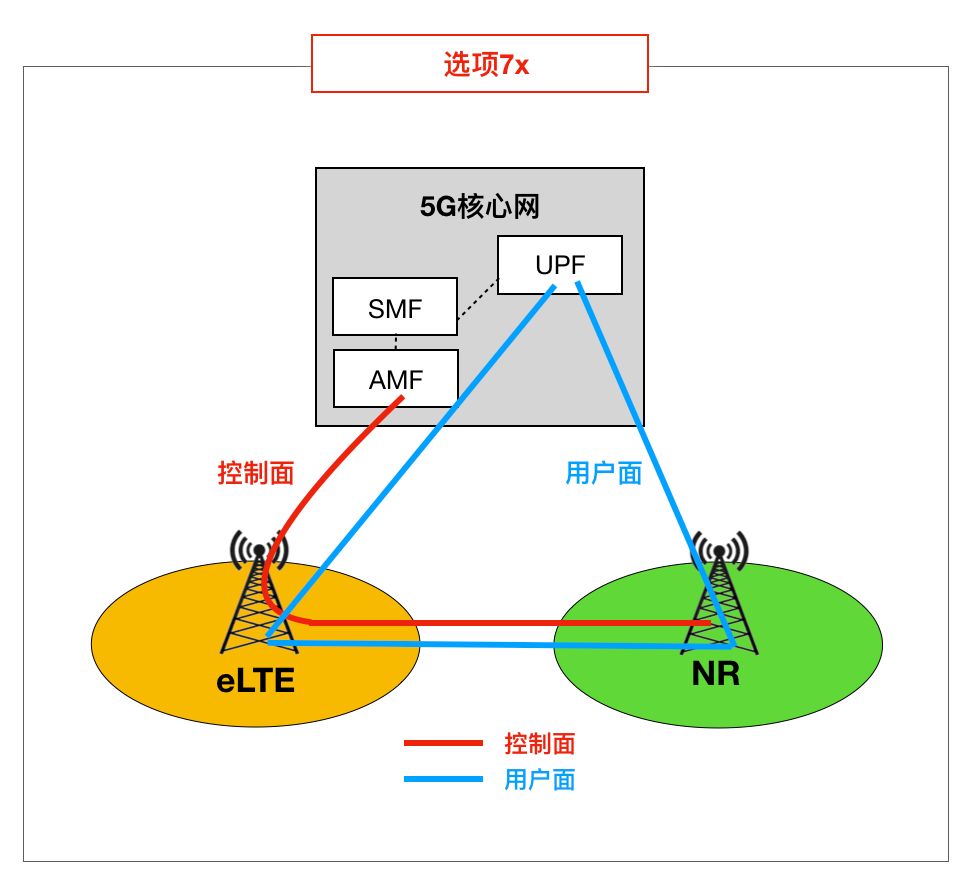
The option 7 series includes sub-options 7, 7a, and 7x, similar to option 3, and can be seen as an upgraded version of the option 3 series, where the option 3 series connects to the 4G core network, while the option 7 series connects to the 5G core network, migrating both NR and LTE to the new 5G core network.
Option 4 Series
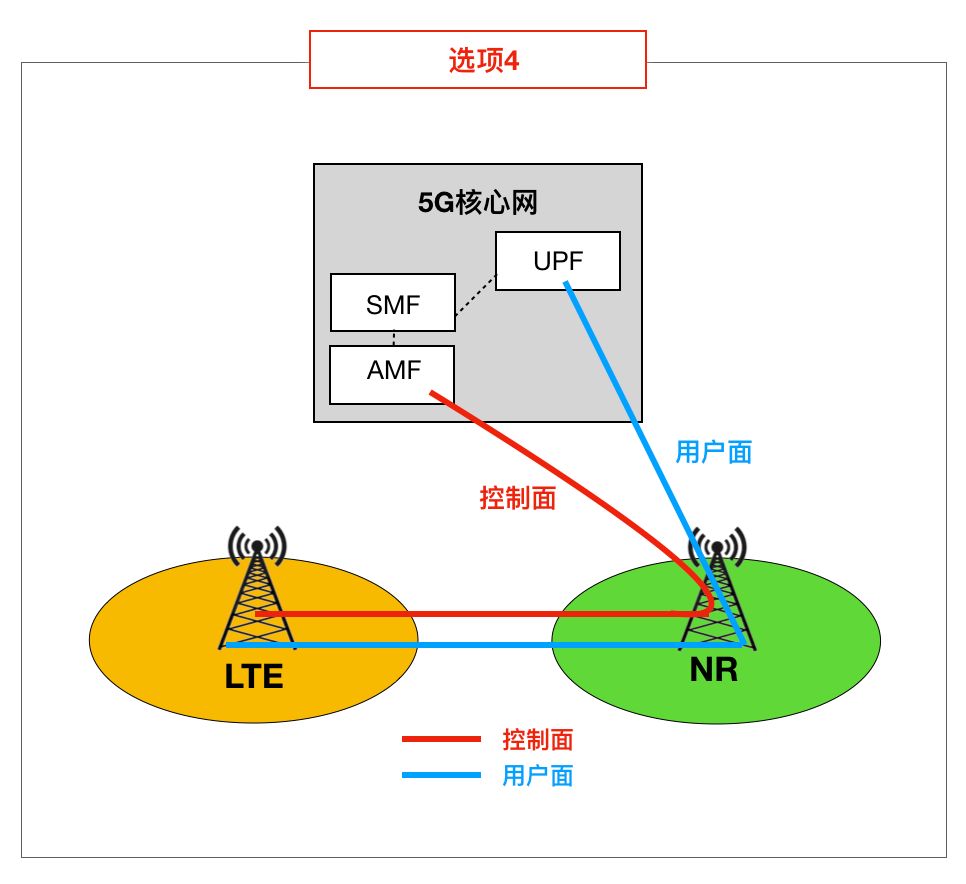

The option 4 series includes sub-options 4 and 4a. Under the option 4 series, 4G base stations and 5G base stations share the 5G core network, with the 5G base station as the master and the 4G base station as the slave.
The option 4 series requires a fully covered 5G network, hence operators deploying 5G in frequency bands below 1GHz prefer this deployment method.
Option 5
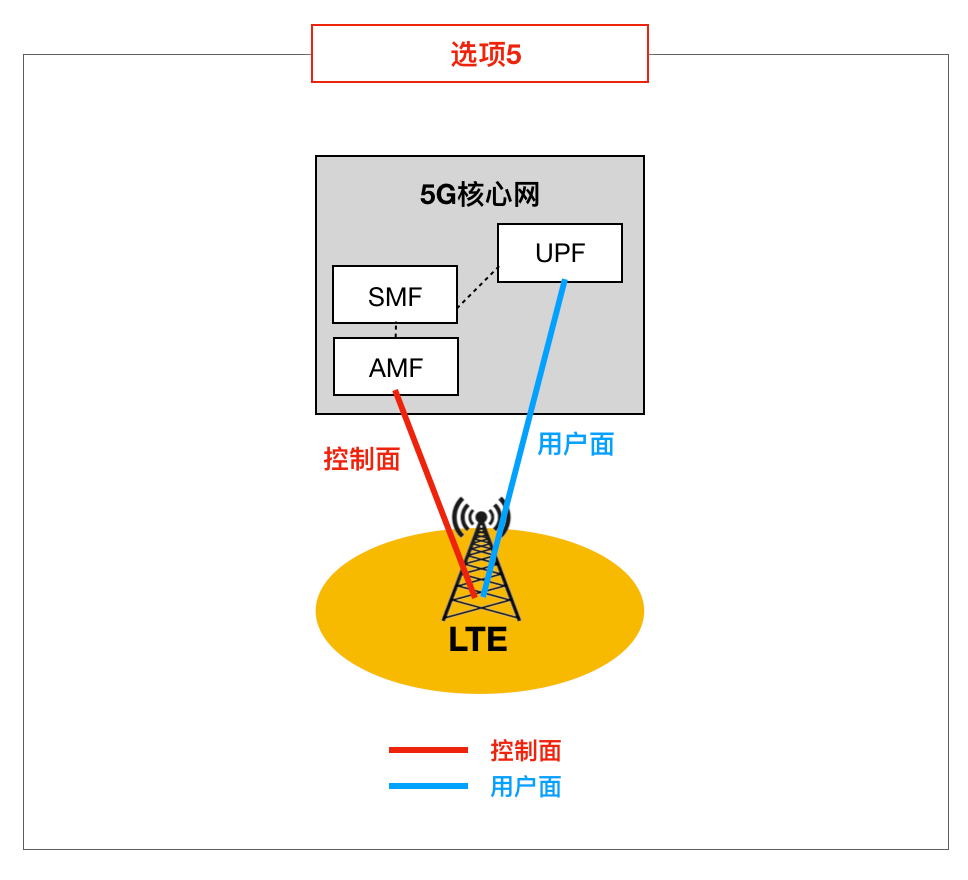
Option 5 connects 4G base stations to the 5G core network, similar to option 7, but without dual connectivity with NR.
Operators choosing option 5 place great importance on the cloud-native capabilities of the 5G core network. For instance, some operators plan to migrate their 4G core network to the 5G core network to help certain enterprise private networks access their 5G core network early, providing them with flexible network slicing services, and also hoping to provide cloud gaming services to consumers as soon as possible.
Network optimization mercenary submission email: [email protected]
Long press the QR code to follow

On the road of communication, let’s walk together!